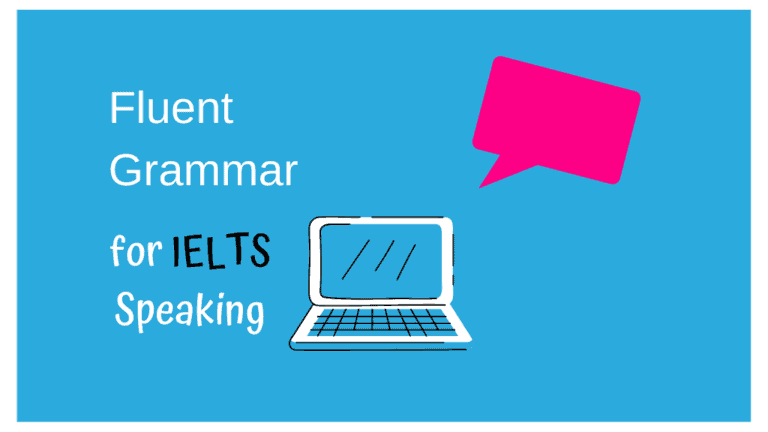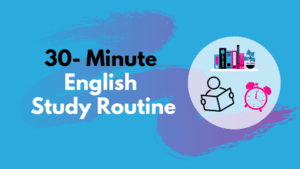👇 Take this lesson with you! 👇
Hello, my dear students! Are you preparing for your IELTS test and finding it difficult to understand native English speakers?
If so, this guide is just for you. It will help you significantly improve your listening skills so you can understand much more when faced with native English speakers. Let’s dive right into it!
Table of Contents
Tip 1: Don't just focus on individual words
One common mistake students often make is focusing too much on individual words and trying to translate them. The truth is, when you put two words together, the sound often changes. Therefore, if you’re listening for individual sounds, you might be focusing on the wrong thing.
For instance, the phrase ‘good day’ might sound like one word when spoken quickly by a native speaker. This is because we often drop sounds, vowels, and consonants when words come together.
In this case, we would only pronounce one ‘d’ sound and say these 2 words as one, like this;
Good day /ɡʊdeɪ/
Here are some more examples of how 2 words may be pronounced as 1:
Shall we /ʃwiː/
It’s fine /sfaɪn/
By knowing that sounds may disappear when words are put together, you can start improving your listening skills and better understand native English speakers.

Tip 2: Notice how native english speakers link sounds
Words in English are often linked together and can even include added sounds that you don’t write.
Here is the secret to linking words:
If a word ends in a consonant and the following word begins with a vowel sound, you can link them.
Here is a common example, where 2 words are linked and pronounced as one sound.
Have a /hævə/
I have a car /aɪ hævə kɑː/
Take the phrase ‘go and,’ for example, which when spoken fast can sound like ‘gowan’. It is usually pronounced like this;
Go and /ɡəʊwən/.
The ‘d’ in ‘and’ is often dropped, while a ‘w’ sound is added between the two vowels ‘o’ and ‘a’. Here’s a longer example,
Go and see /ɡəʊwənsiː/
By recognising these changes, you can understand phrases such as the one below more easily.
‘Shall we go and have a good day?’ /ʃwiː ɡəʊwən hævə ɡʊdeɪ/

Tip 3: Pay attention to sentence stress
In spoken English, certain words are stressed while others are reduced, creating rhythm and intonation. The stressed words typically carry the main meaning and are usually nouns, verbs, adjectives, or adverbs.
For instance, in the sentence ‘Can you pay by cash?’ ‘pay’ and ‘cash’ are stressed.
By focusing on these stressed words, you can grasp the main idea more quickly.
Here is an important study tip. When you are doing listening practice, you should practice both intensive listening, where you listen to short clips of say, 30 to 60 seconds, and focus on understanding as much as possible, and extensive listening, where you listen to longer clips (podcasts, films TV shows) and focus on understanding the main ideas, not everything.
When you do intensive listening practice, focus on sentence stress and picking out the keywords that are stressed. That is usually enough to get the meaning. Forget about the other unstressed words. This is actually what native English speakers do, so why not try it too?
Tip 4: Learn and recognise chunks
Chunks are phrases or expressions that are learned and used as single units, rather than individual words. For instance, ‘have a good day’ is a common English chunk.
Many grammatical structures and idiomatic expressions are also chunks. By training your ear to pick out these sounds or chunks, you can understand native English speakers more effectively.
A useful tip to improve your spoken grammar is to understand that most grammatical structures are actually chunks and we learn them, and say them, as one sound.
Here are some examples,
I’d like to /aɪdlaɪktə/
I should have /aɪʃʊdəv/
Can you /kənjə/
I didn’t want to /aɪdɪdənwɒntə/
When listening, try to pick out and hear these chunks as one sound. Then, if you can, practice repeating these sounds again and again, until they start to sound like familiar music.
If you want to practice lots of grammatical chunks like this, and really improve both your listening skills and spoken grammar, go and check out my online course Fluent Grammar for IELTS Speaking.
You will not only improve your listening skills, but you will also start to speak grammar more correctly with English-like intonation. Learn more here.
Tip 5: Learn about weak forms and contractions
| Prepositions | Strong | Weak |
|---|---|---|
| To | /tuː/ | /tə/ |
| Of | /ɒv/ | /əv/ |
| For | /fɔː/ | /fə/ |
| Conjunctions | Strong | Weak |
|---|---|---|
| And | /ænd/ | /ən/ |
| Than | /ðæn/ | /ðən/ |
| Auxiliary Verbs | Strong | Weak |
|---|---|---|
| Are | /ɑː/ | /ə/ |
| Was | /wɒz/ | /wəz/ |
| Have | /hæv/ | /əv/ |
| Can | /kæn/ | /kən/ |
| Do | /duː/ | /də/ |
The weak form is typically used when these words are not stressed which is actually most of the time.
The mistake most students make it to try and listen for the strong form, such as ‘to’ /tuː/, when most of the time you need to be listening for the weak form /tə/.
Recognising these weak forms when listening to native English speakers, can greatly aid your listening comprehension.
In addition to weak forms, you should also familiarise yourself with contractions, which are often used in spoken English. Contractions are words made by shortening and combining two words, like ‘I’ll’ for ‘I will’, or ‘I’m’ for ‘I am’.
Here are some common ones you should learn to listen for;
- I am hungry = I’m hungry
- You are late = You’re late
- I would like one = I’d like one
- He is happy = He’s happy
- He has done it = He’s done it
- You should have told me = You should’ve told me
- I would have helped you, if you had called = I’d’ve helped you, if you’d’ve called

Conclusion
Understanding native English speakers may seem challenging at first, but with these tips, you’ll soon find it easier to follow conversations, understand films, and even excel in your IELTS listening test!
Remember, the key to improving your listening skills is practice, so make sure to expose yourself to English audio regularly. Most importantly of all, enjoy your learning!







2 thoughts on “Understand Native English Speakers With These 5 Tips”
I found this lesson very interesting
I need to learning English like native people.